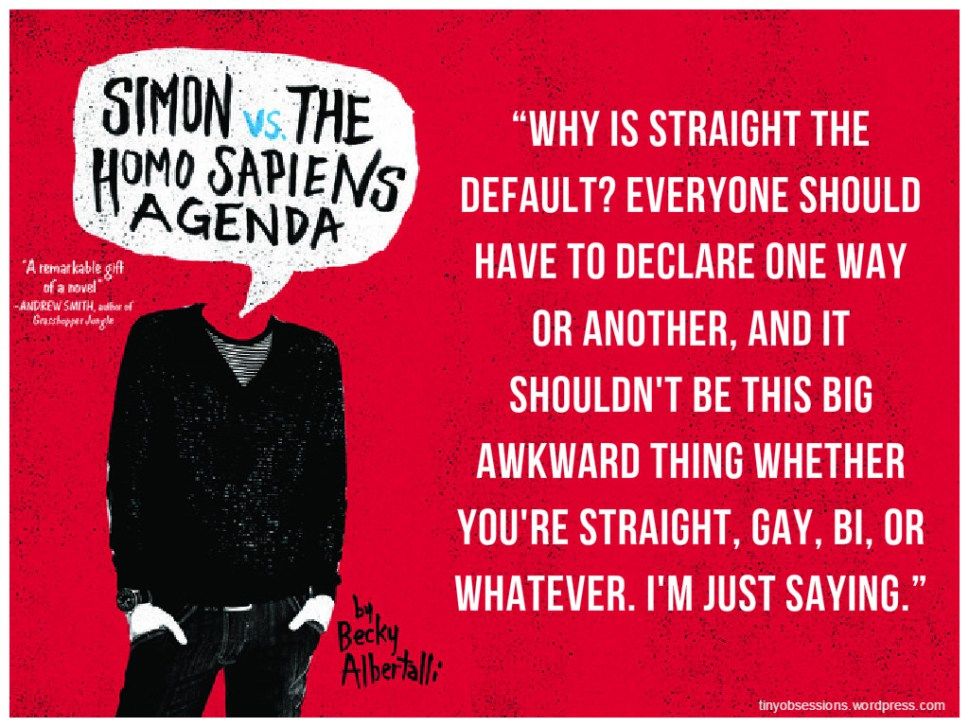Reading a book is an internal, personal experience. Even the most descriptive writing leaves so much to a reader’s imagination. It’s been said that reading a novel is a collaboration between the author and the reader; the writer creates what’s on the page while the reader uses personal experience and opinion to conjure mental images and bring meaning to the story.
So unless the author spells it out, every one of us imagines something different when we read a book. “House” might conjure up where you live now, or your childhood home, or a friend’s place — and if the author doesn’t give you more detail, it doesn’t really matter how you picture that character’s bedroom, or their high school, or their neighborhood.
It gets trickier when it comes to the characters themselves. Unless we’re told otherwise, most readers default to an image of characters who are white. And straight. After all, so many fictional characters we watch on tv and see in movies are white and straight and middle class, so it’s easy to assume that characters in books are also white and straight — even if we’re never told that explicitly.
Which brings me to Simon.
Love, Simon, which came out [heh] in March 2018, was the first major-studio teen gay romantic comedy released in the United States. The movie was based on the 2015 book Simon vs. the Homosapiens Agenda by Becky Albertalli, which won the 2016 Morris Award for debut YA literature.
Simon, the title character, is white and middle class and as far as anyone knows when the story starts, straight. But he’s been trading emails with another gay guy at his high school for a while now. Simon doesn’t know who he is — they’ve been using code names — and neither one of them is out. When Simon fails to log off a computer in the school library, a classmate sees the emails and threatens to out Simon if he doesn’t help set him up with a girl he likes.
Simon vs. the Homosapiens Agenda is a delightful contemporary YA novel: funny, dramatic, and romantic. Filled with great friends, cool sisters, awkward parent conversations, and flirty emails with the mysterious Blue, it’s a feel-good book that anyone can enjoy.
And that’s plenty. But Simon is also bursting with little nuggets of wisdom about friendship, coming out, growing up, and finding your own identity. At one point Simon has an epiphany: “White shouldn’t be the default any more than straight should be the default. There shouldn’t even be a default.”
The cast of characters in Simon vs. the Homosapiens Agenda is perfect for the #weneeddiversebooks era, with a rainbow of race, gender, and sexuality represented. Albertalli definitely doesn’t give in to the defaults in her books!
But Simon is an amiable, good looking, straight-acting, white, male, middle class, reasonably fit, regular dude. And fair or not, that makes him the default in nearly every way — an accessible character perfectly suited to be the gay lead in an award-winning book or the main character in the first mainstream gay teen romantic comedy movie.
So if you haven’t read many QUILTBAG books, this might be your gateway novel. Or if you want to hand a book to a friend or family member who’s a little wary of QUILTBAG themes and characters, this could be a good one to start with. And if you’ve already read Simon, I recommend Albertalli’s Leah on the Offbeat (a sort-of sequel, set one year later, and from friend Leah’s point of view), and The Upside of Unrequited (a mega-diverse story with some small connections to the Simon-verse).
The movie, Love, Simon, while different from the book in a number of ways, is equally charming and accessible. The Pop Culture Happy Hour podcast did a great episode discussing the movie, which includes a nice story about a gay man seeing the movie with his mother, her reaction, and their long-overdue conversation that followed.
Just as we’re seeing more racially diverse characters on tv, in movies, and in books, QUILTBAG titles are also breaking down the defaults by putting characters of diverse gender roles and sexualities front and center. I encourage you to fight the defaults in your own reading habits. If you haven’t read Simon vs. the Homosapiens Agenda, it’s not a bad place to start.

